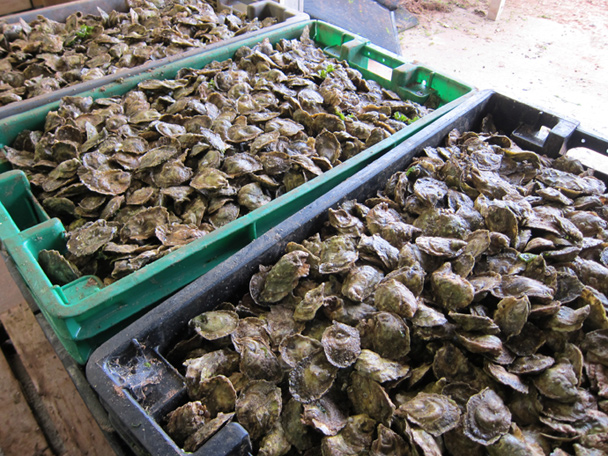My fascination with Prince Edward Island—an idyllic 140-mile-long stretch of floating farmland in the Gulf of St. Lawrence, just north of Nova Scotia—began in the fourth grade. I was captivated by Anne of Green Gables, L. M. Montgomery’s popular novel about a spunky red-haired orphan who came from the mainland to live on the north shore of the island. Upon arriving, Anne was awestruck: “I’ve always heard that Prince Edward Island was the prettiest place in the world, and I used to imagine I was living here, but I never really expected I would. It’s delightful when your imaginations come true, isn’t it?” Back then, I had no idea if this pastoral spot—with its rambling old farmhouses, red-dirt roads, flowering trees, and windswept beaches—actually existed, but just the same, I dreamed of visiting one day.
My curiosity was rekindled many years later in a Manhattan oyster bar. I had just moved to New York, and to celebrate, a friend ordered us a dozen P.E.I. oysters—Malpeques, to be exact. Though I wasn’t sure what P.E.I. or Malpeque meant at the time, I knew after devouring the oysters—plump and briny, with a clean aftertaste—that they were by far the best I had ever had. I later learned that P.E.I. stands for Prince Edward Island, home to some of the world’s best oysters: Malpeques, Raspberry Points, and the crème de la crème, Colville Bays. The island’s mussels, lobster, scallops, and just about every other kind of seafood are exemplary, too.
I finally had the chance to visit Prince Edward Island last fall. Would it be the island in the book? I wondered. Would it be bivalve paradise? What I found was a bit of both, though even better than my “imaginations,” as Anne would say.
With only about 145,000 residents, Prince Edward Island is Canada’s smallest province, and so laid-back and friendly that strangers actually smile and say hello as you pass on the street. What first struck me was the island’s natural beauty: miles and miles of secluded beaches, red sandstone cliffs, and gently rolling hills dotted with family farms. Locals tend to spend their summer vacations on the island, I learned—with picture-postcard beaches and so much great food to be had, what’s the point of leaving?
Granted, summers here are brief (July and August), and winters stretch from November to April, making May through October the best time to visit. There’s plenty to explore in these warmer months, from the beautiful white-sand beaches of the P.E.I. National Park on the north shore to the charming village of Victoria by-the-Sea in the south. There are also miles of scenic coastal roads for driving or biking, plus the 250-mile Confederation Trail, created exclusively for bikers and hikers. The capital city, Charlottetown, with its mid-19th-century clapboard homes, tree-lined streets, and working harbor, is home to the Culinary Institute of Canada and a number of top-notch restaurants.
And, of course, there are the Anne of Green Gables attractions—mostly in and around Cavendish—such as the Green Gables house, the Montgomery homestead, and Avonlea Village, a Disney-esque living-history museum. These and the perennial Anne of Green Gables, The Musical—approaching a half-century on the boards—are big business on these shores, bringing a steady flow of fans, including many from Japan.
But what impressed me most was the island’s hyper-local food culture. For a seafood fanatic like me, P.E.I. is a little slice of heaven. During the summer months, you can sample oysters, mussels, scallops, lobster, or tuna just hours out of the water. Lobster rolls on P.E.I. are as ubiquitous as hamburgers in the U.S.—even McDonald’s sells them. And if you’re so inclined, the island has all sorts of hands-on adventures, whether you want to dig for clams, tong for oysters, or go deep-sea fishing for tuna. Fabulous oysters—the kind you might pay $3.25 apiece for in New York City—can be bought right off the boat for as little as $8 a dozen.



 Pinterest
Pinterest


